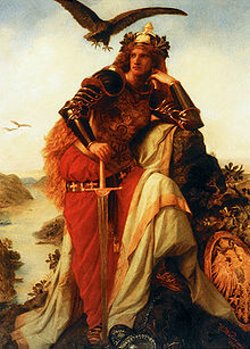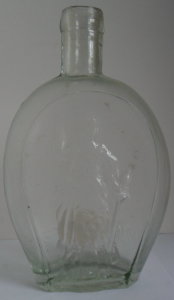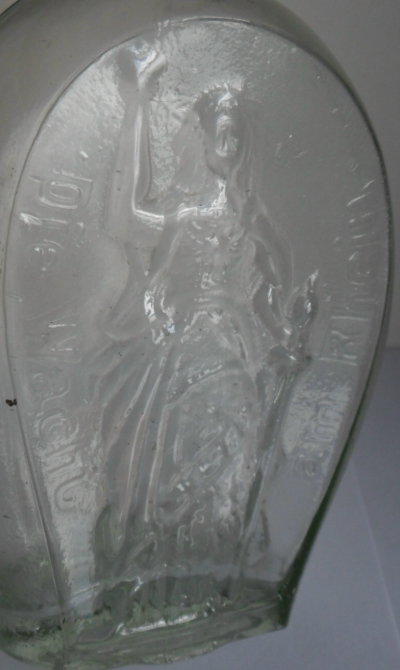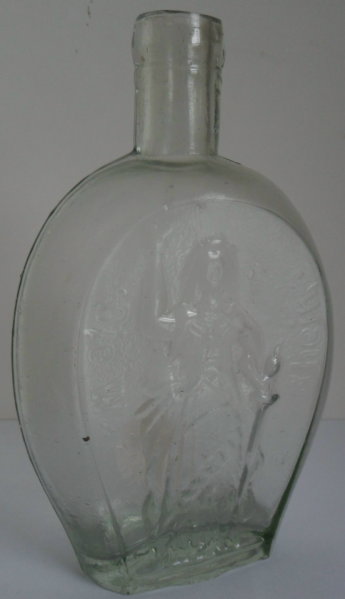| |
DIE WACHT AM RHEIN: GERMANIA ON GUARD ON THE RHINE: FLASK Die Wacht AM Rhein or in english meaning Germania on Guard on the Rhine. This is a German Patriotic Anthem. From Wikipedia.org "During the Rhine Crisis of 1840, French prime minister Adolphe Thiers advanced the claim that the Upper and Middle Rhine River should serve as his country's "natural eastern border". The member states of the German Confederation feared that France was planning to annex the left bank of the Rhine, as it had sought to do under King Louis XIV, and had temporarily accomplished during the Napoleonic Wars and the implementation of the Confederation of the Rhine in 1806-1813. In the two centuries from the Thirty Years' War to the final defeat of Napoleon, the German inhabitants of these lands suffered from repeated major and minor French invasions. Nikolaus Becker responded to these events by writing a poem called "Rheinlied", in which he swore to defend the Rhine. The Swabian merchant Max Schneckenburger, inspired by the German praise and French opposition this received, then wrote the poem "Die Wacht am Rhein". In the poem, with five original stanzas, a "thunderous call" is made for all Germans to rush and defend the German Rhine, to ensure that "no enemy sets his foot on the shore of the Rhine" (4th stanza). Two stanzas with a more specific text were added by others later. Unlike the older "Heil dir im Siegerkranz" which praised a monarch, "Die Wacht am Rhein" and other songs written in this period, such as the "Deutschlandlied" (Germany's current national anthem) and "Was ist des Deutschen Vaterland?" (What is the German's Fatherland?) by Ernst Moritz Arndt, called for Germans to unite, to put aside sectionalism and the rivalries of the various German kingdoms and principalities, to establish a unified German state, (not least) in order to be able to defend Germany. Schneckenburger worked in Switzerland, and his poem was first set to music in Bern by Swiss organist J. Mendel, and performed by tenor Adolph Methfessel for the Prussian ambassador, von Bunsen. This first version did not become very popular. Schneckenburger died in 1849 and never heard the more famous tune. When Karl Wilhelm, musical director of the city of Krefeld, received the poem in 1854, he wrote a version of his own and performed it with his men's choir on June 11, the day of the silver anniversary of the marriage of Prinz Wilhelm von Preussen, who would later become German Emperor Wilhelm I. This version was spread in song festivals." Below is a painting by Hermann Wislicenus which he painted in 1873. The German Warror on Guard on the Rhine River.  Below are photos of a 6 inch tall small size flask embossed DIE WACHT ( picture of a German Warror) AM RHIEN. There also is a larger size of the same flask.   References: www.wikipedia.org Frank & Frank Jr. (Wicker) Bottle Collection.  |
|---|---|